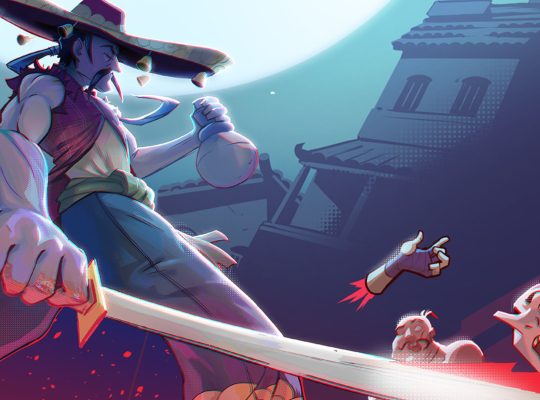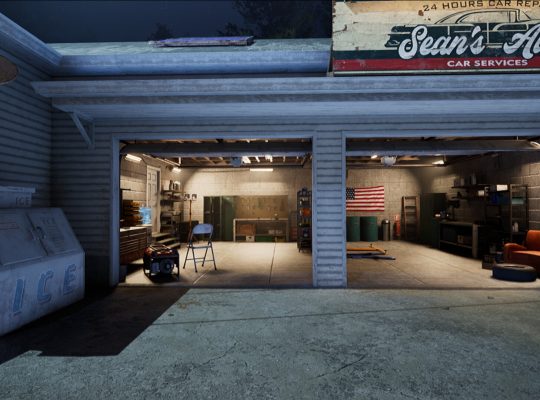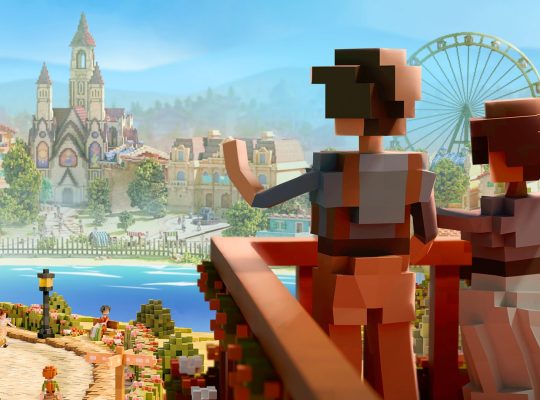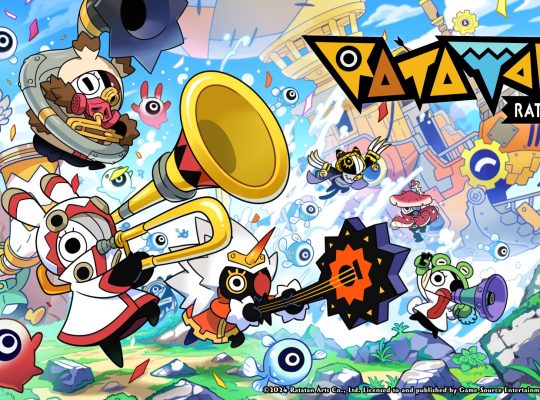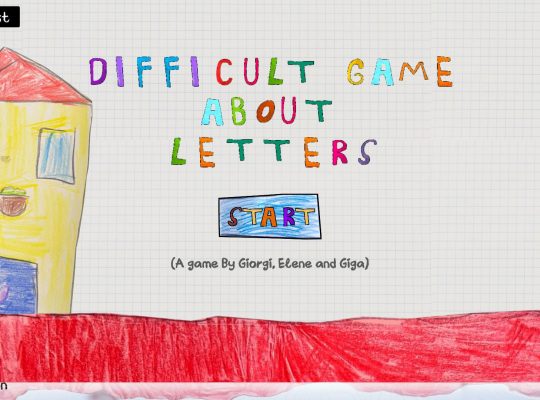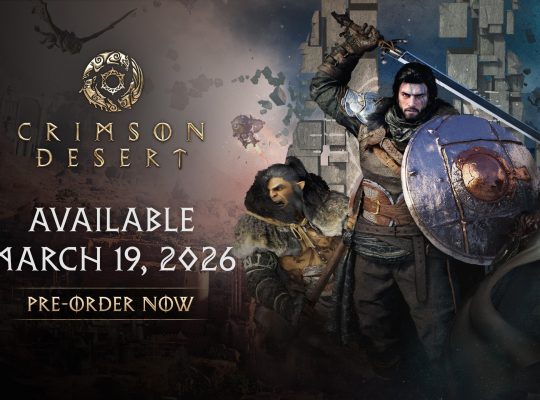- DEVELOPER: AMPLITUDE Studios
- PUBLISHER: Hooded Horse
- PLATFORMS: PC
- GENRE: 4X Strategy
- RELEASE DATE: September 22, 2025
- STARTING PRICE: 49,99€
- REVIEWED VERSION: PC
ENDLESS Legend 2 returns with an ambitious plan: to bring back the planet-sized stories and unique style that made the first game famous. Developer Amplitude Studios has not simply updated the 2014 classic; instead, they have delivered a fantasy 4X game that is really fun. It combines high-fantasy, sci-fi, and strategy driven elements by story in a way few other games attempt.
The strange planet Saidaha where ENDLESS Legend 2 takes place, constantly changes and holds many stories: tales of lost spacefarers, secrets buried beneath its surface, and species fighting extinction to gain power. For example, a sentient rock, an old hologram, and an alien zealot debate how to handle the arrival of a sleeping, long-forgotten god.
You constantly face hard choices and moral problems built on new game systems, a complex web of connected faction traits and technologies. Each of the five playable factions has its own way of approaching this new world. While some stories remain similar, the main goal is always the same: to survive and adapt to the new surroundings. However, the game includes a lot of text to read. If reading is not your thing, a skip button is useful when you just want to make a quick decision instead of reading hours of story.

Tidefall Mechanic Revolutionizes 4X Exploration
The first Endless Legend mixed storytelling and 4X gameplay well, but the sequel fills its campaigns with even more dialogue, quests, and unique discoveries. This makes every action feel important. The most impactful new feature is the Tidefall mechanic, which fundamentally changes how you explore the game and solves the classic 4X problem of a stagnant map. Initially, Saiadha starts as a group of islands, confining factions to small coastlines. But, at different times during the campaign, major “Tidefall” events happen, causing the oceans to dramatically recede.
This reveals new land, resources, powerful ancient Fortresses, and new settlements from Minor Factions. Suddenly, a map that started as a puzzle of islands becomes proper continents, forcing every player to rush toward new regions. This constant, dynamic shift keeps the action fast, turning the expansion phase into a race and making the exploration of the unknown an interesting factor throughout the entire campaign.
The settlement system offers impressive flexibility. After establishing your first city, you expand by claiming separate territories using Camps. These Camps give you control and resources, but they are limited. Using Influence, you can either upgrade the Camp to a full City or connect it to an existing one. This second option allows empires that “build tall” to spread across the map. Specifically, connected settlements share the same building queue, population, and economy of the main city, creating gorgeous city-shaped dioramas on the map.
There are a huge amount of building types you can focus on, such as technology labs, farms, housing, merchant markets, and trading posts to get resources you don’t have in your territory. For example, Titanium can be used to upgrade units, while another resource might give you a bonus to gain more gold in your city. You can also sell these resources. Furthermore, certain city improvements provide even bigger bonuses. However, while building might be easy early on, it becomes more expensive in the late game.

Exploring the Factions of Early Access
Amplitude’s signature commitment to unique design is clearly visible with the Early Access factions. Each faction requires a completely different playstyle and economy. For example, The Necrophage faction is driven by a constant need for conflict. They face fewer penalties for continuous warring and can strike with terrifying speed, using Burrows to travel across continents and attack cities.
In contrast, The Last Lords show an example of complex design. Unlike other groups, they do not consume food; instead, they rely on Dust (the main currency of the series) to grow their population. Dust also serves to expand cities, make deals, and instantly heal units. While they can become economic powerhouses, their spectral nature forces them to consume and sacrifice their mortal servants (pops from other factions) to bring back their more powerful Lords.
Generally, each faction is super interesting and fun in its own way. You’ll have plenty of replay options because the randomized maps always bring something different. The way you interact with Minor Factions is also tailored to your race. For instance, as the Last Lords, you can build feudal estates inside villages. This gives you income from taxes and forces the people into service.
Strategic thinking and tactical movements are key in this game. Because the maps are large and the turns are limited, you’ll need to make smart decisions that boost your productivity and lead you to victory. One playthrough lasts for multiple years. Each year brings new technologies, resources, ways to move across the map, and expand. Therefore, you cannot simply “paint the map” early on; although that is what happens in the late game, it can feel quite tiring at some point.

Endless Legend 2 Nails Tactical Combat
ENDLESS Legend 2 moves away from the quick, hands-off battles of the first game, shifting to the full unit control system you saw in Humankind. When a fight begins, a battlefield appears on a section of the campaign map, including all its terrain. You take direct control over your units’ movement and abilities, using terrain for cover and strategic bottlenecks.
Unit design, especially the heroes, makes the combat significantly stronger. Heroes gain experience, get new equipment, and develop active and passive abilities that can quickly change the outcome of a fight. This tactical depth makes manually playing out key battles highly rewarding. However, the battles are designed to be fast, often ending after just a few turns (even if units remain), which keeps the game moving quickly.
Even if a battle ends in a draw, you can attack the enemy again the next turn. Also, cities have massive walls you must break through. Once you do that, you then fight the defenders and all enemies inside the city walls. The game includes a huge amount of different units. What I really like is that the game lets you upgrade your base units instead of forcing you to build new infantry every time. However, the maps feel quite empty. Minor factions do present challenges and they expand constantly, but besides collecting discoveries, building camps, and conquering fortresses, there isn’t much else to do.
While your main goal is to gather resources, the diplomacy system is quite simple. You can arrange alliances, share technology, exchange map information, open and close borders, and declare wars, but you must have a reason for war. I do wish the game had a proper trading system instead of forcing you to manually click to buy and sell resources. Additionally, major battles only start to happen after the second phase (around turn 80), which can make the early game feel underwhelming.

Early Access Problems
The game’s complexity creates a steep learning curve, since the many mechanics of the very unique factions can overwhelm newcomers to this genre. I personally skipped the tutorial because I had experience with the demo and other similar games. Beyond that, ENDLESS Legend 2 definitely has balancing issues. While the goal is to make each faction equally strong in their own way, some factions can easily destroy you if they are played correctly.
Also, the early part of the game is really fun, but then after turn 100, everything becomes so expensive and time-consuming with micromanagement that it ruins the fun slightly. It will require more strategy and a tactical approach, though other things, like units and technology, definitely get interesting. As an early access title, it is missing key polish and features, such as the custom faction creator and game speed options, which would improve the overall experience.
The highly specialized faction economies too can feel overly restrictive for players used to more flexible empire management. Finally, the tactical battlefield design often favors chokepoints, leading to battles that focus on shuffling units instead of exciting maneuvering. Clearly, not everything is perfect, which is why this title is in Early Access and feels unfinished. It definitely needs more factions, and multiplayer would be a great addition.

Should You Play Endless Legend 2 Right Now?
ENDLESS Legend 2 is a stunning game, arguably the prettiest 4X game ever made (I’m looking at you Civilization VII). The style is a rich sci-fantasy blend that feels unique. Overall, the game includes an absurd level of detail across its many biomes, resources, plants, and animals, all lovingly rendered to create a richly detailed, alien world.
Even in this Early Access state, ENDLESS Legend 2 is an incredible 4X game, built on a mountain of brilliant ideas. It offers fully-formed campaigns that feature wildly creative factions and clever mechanics, proving that Amplitude’s unique vision is stronger than ever. Since the developers are highly involved with the community to gather feedback, this game will become truly incredible if it continues this way.
I must admit that while the game offers a satisfying experience, you should wait for a discount if you don’t want to deal with its current price and unfinished Early Access state. However, if you are a massive fan of the 4X genre, you should not miss this title, especially because you can play it on Game Pass.
Pros
- Truly Asymmetrical Factions: Each of the five launch factions offers a fundamentally unique strategic puzzle, ensuring massive replayability.
- Dynamic Tidefall Mechanic: The map physically changes throughout the campaign, exposing new land and resources, which revitalizes the 4X loop and maintains high strategic tension.
- Engaging Tactical Combat: Full unit control, hero RPG elements, and active abilities make manually fighting battles strategically rewarding and a significant improvement over the predecessor.
- Breathtaking Visuals: The art direction is a masterful blend of sci-fi and fantasy, creating one of the most aesthetically pleasing and highly detailed 4X worlds in recent memory.
- Rich Quest and Lore System: Faction-specific quests and Minor Faction interactions are brilliantly combined into the strategic gameplay, providing meaningful narrative justification for your actions and expansion.
Cons
- Diplomacy is Underwhelming: Acknowledged by the developers, the diplomatic system is currently functional but lacks the strategic depth of the other mechanics.
- Early Access Polish: Missing features like a custom faction creator and variable game speed, and some UI elements still need refinement.
- Steep Learning Curve: The massive asymmetry and complexity of unique faction mechanics can be overwhelming for new 4X players.
- Economy is Hyper-Niche: Some factions’ unique economies (e.g., Last Lords relying solely on Dust) can feel overly restrictive and difficult to manage.
- Tactical Map Design: The battlefields often rely heavily on chokepoints and bottlenecks, which can sometimes lead to repetitive unit maneuvering during combat.
Review copy provided by the publisher
4




